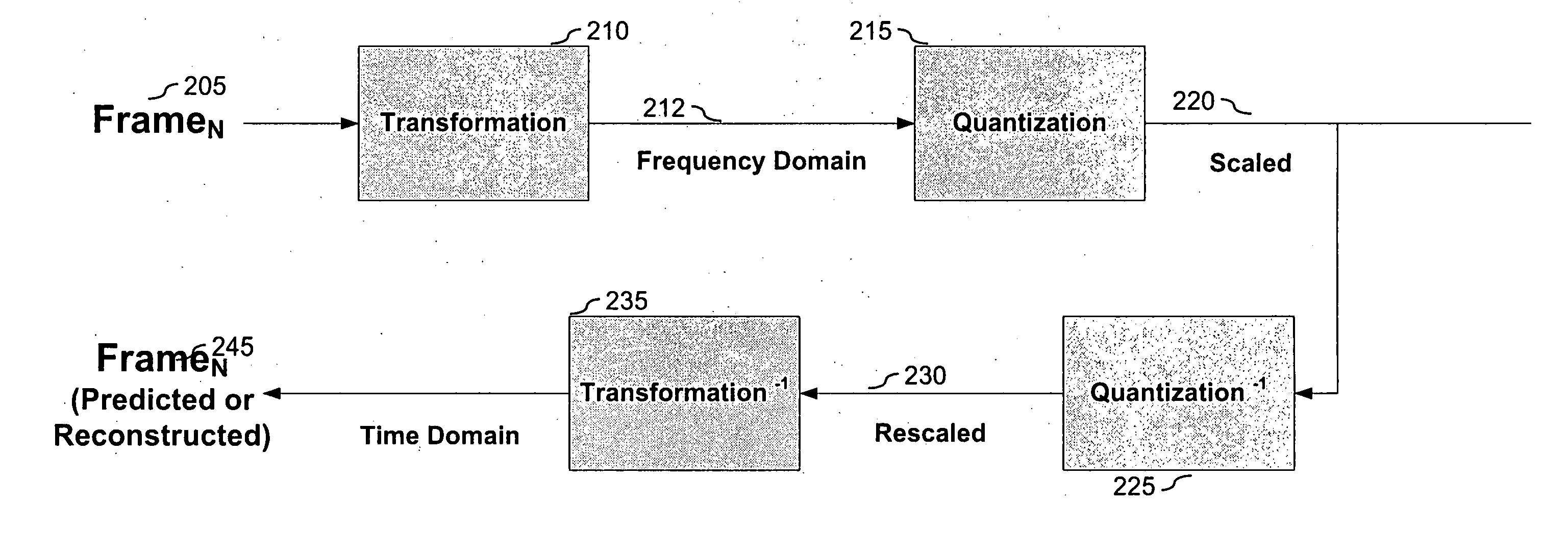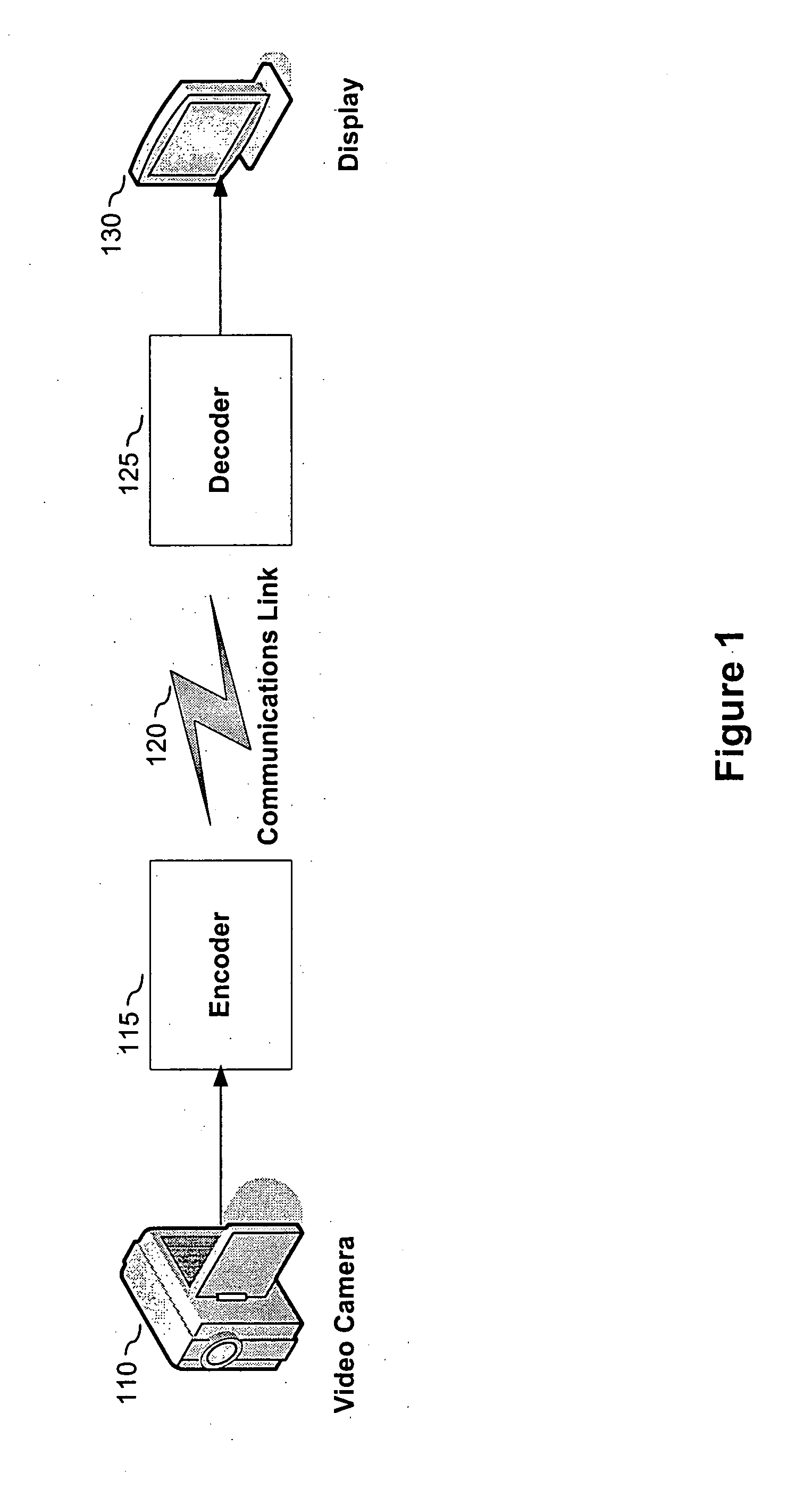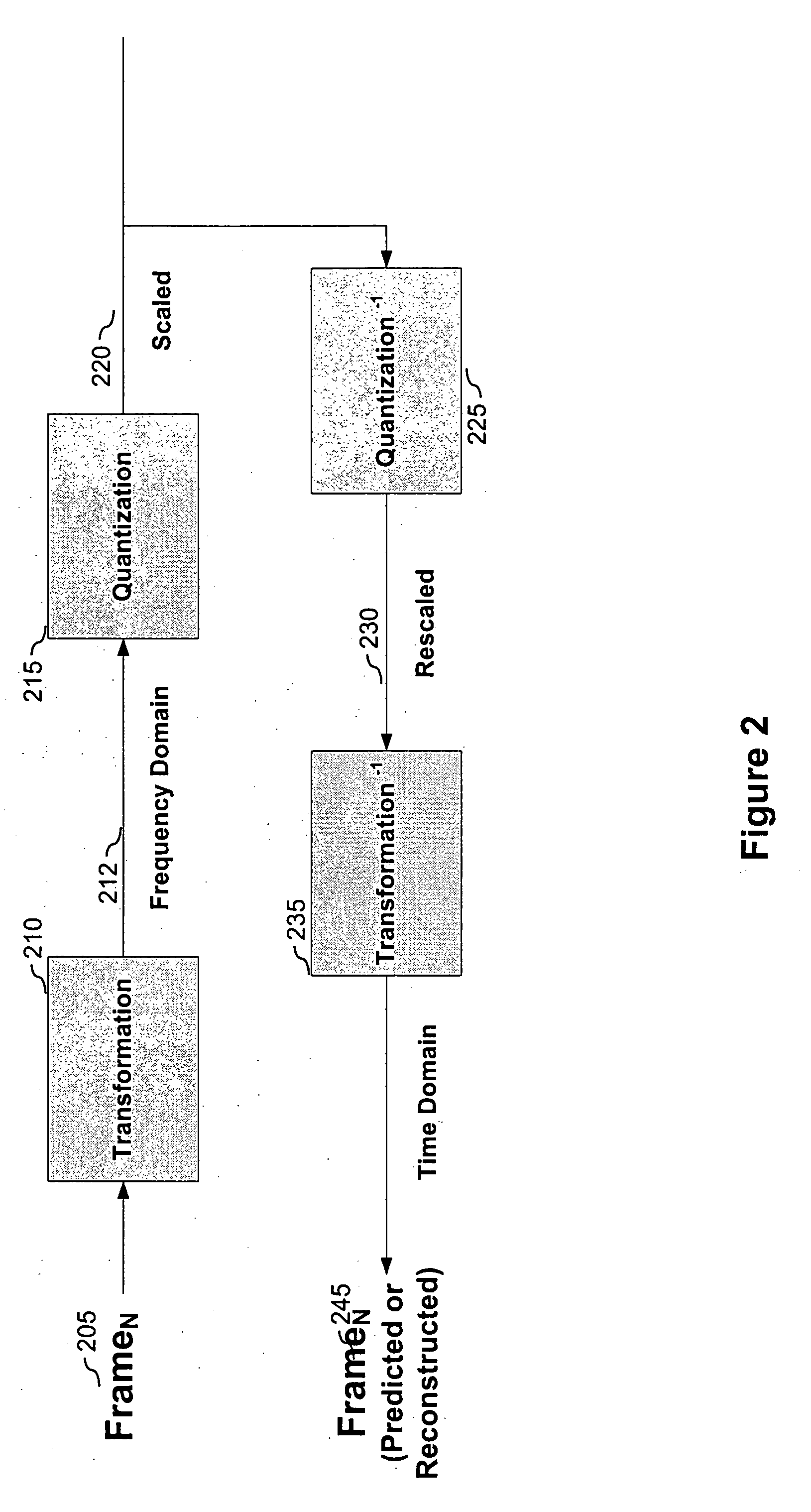Prediction intra-mode selection in an encoder
a technology of encoder and prediction mode, applied in the field of encoding data for transmission, can solve the problems of reducing the processing resources and time required to select a prediction, and achieve the effect of reducing processing resources and tim
- Summary
- Abstract
- Description
- Claims
- Application Information
AI Technical Summary
Benefits of technology
Problems solved by technology
Method used
Image
Examples
Embodiment Construction
[0032] An apparatus and method for selecting a mode for encoding a video signal, including luma and chroma components therein, is described. In one embodiment of the present invention, the number of available prediction modes is filtered, prior to calculating rate-distortion values, relative to a quantization parameter applied during encoding. This filtering process reduces the number of modes for which a rate-distortion value needs to be calculated; thereby reducing the resources and time required to encode the video signal.
[0033] In the following description, for purpose of explanation, specific details are set forth in order to provide an understanding of the invention. It will be apparent, however, to one skilled in the art that the invention may be practiced without these details. One skilled in the art will recognize that embodiments of the present invention, some of which are described below, may be incorporated into a number of different devices including personal computers...
PUM
 Login to View More
Login to View More Abstract
Description
Claims
Application Information
 Login to View More
Login to View More - R&D
- Intellectual Property
- Life Sciences
- Materials
- Tech Scout
- Unparalleled Data Quality
- Higher Quality Content
- 60% Fewer Hallucinations
Browse by: Latest US Patents, China's latest patents, Technical Efficacy Thesaurus, Application Domain, Technology Topic, Popular Technical Reports.
© 2025 PatSnap. All rights reserved.Legal|Privacy policy|Modern Slavery Act Transparency Statement|Sitemap|About US| Contact US: help@patsnap.com



